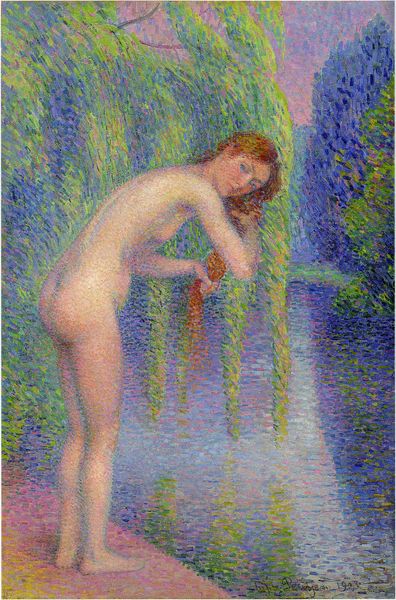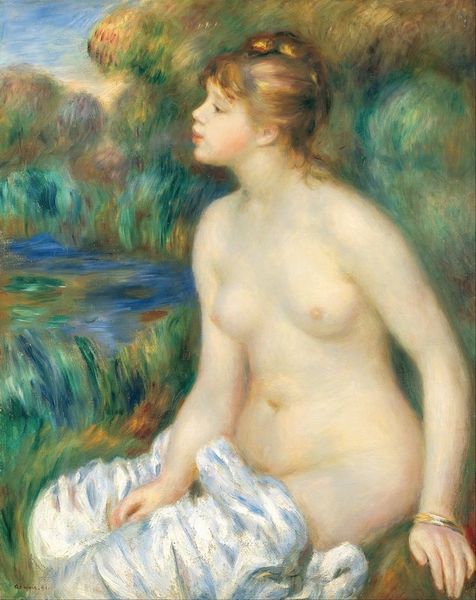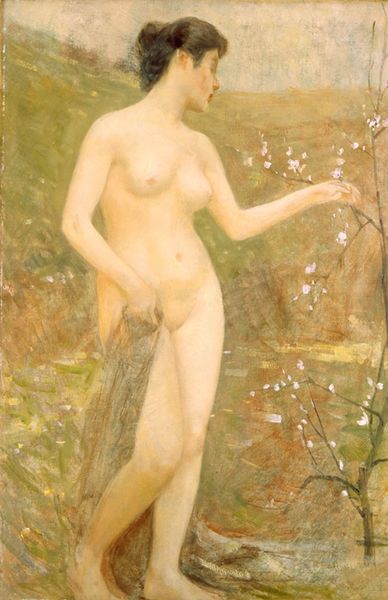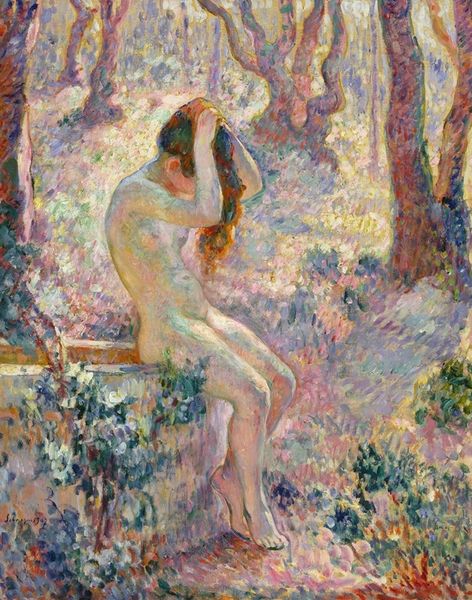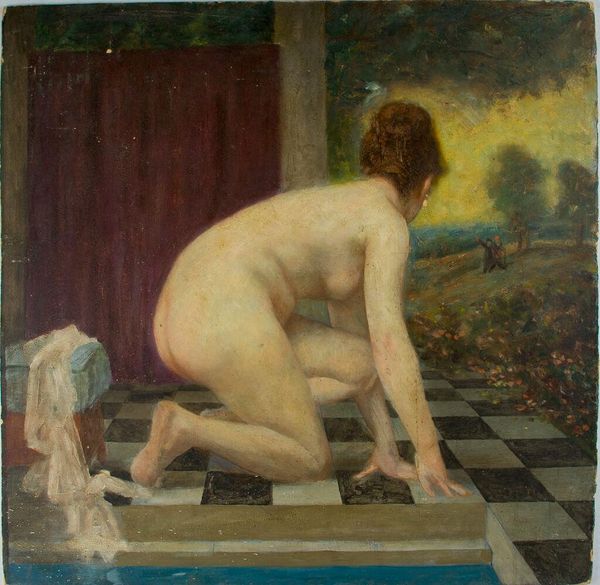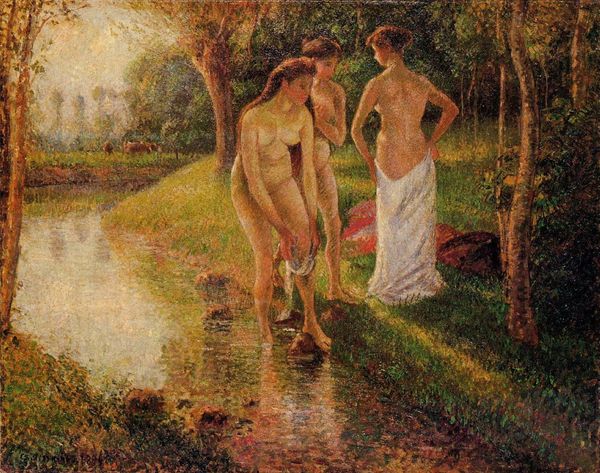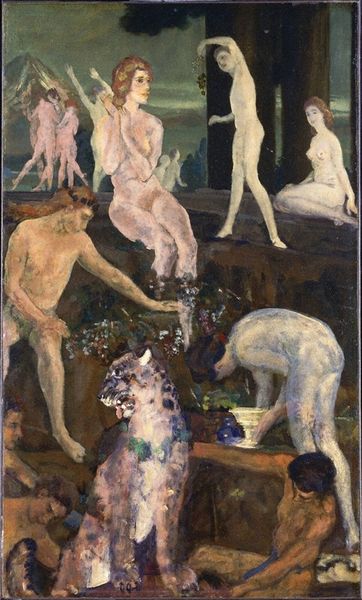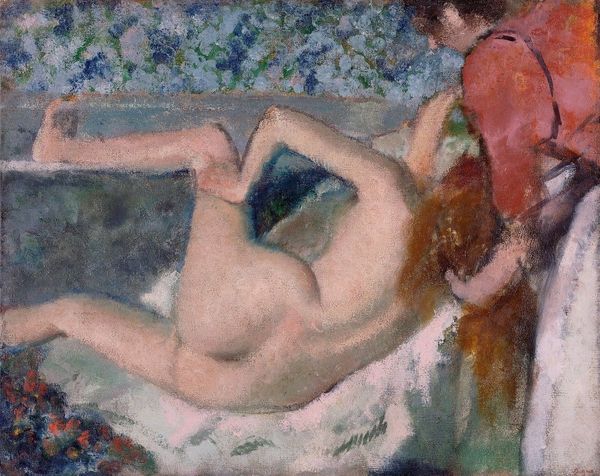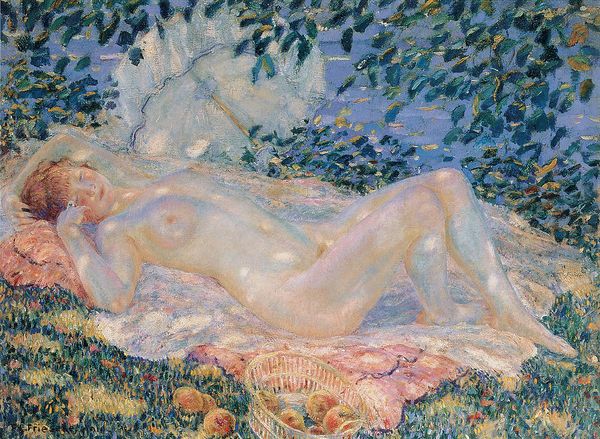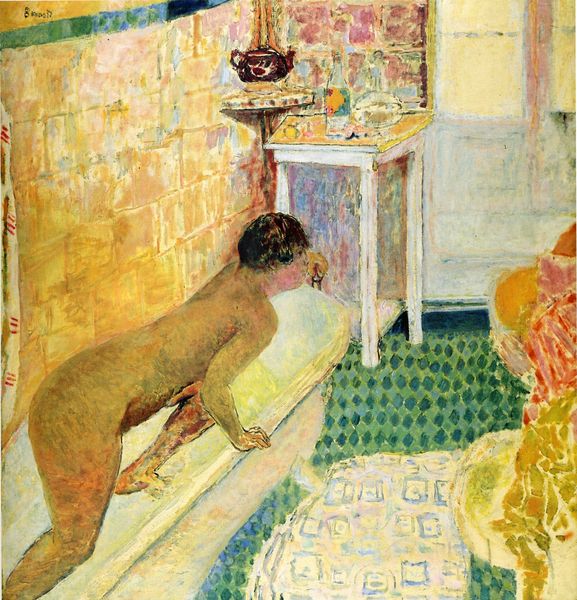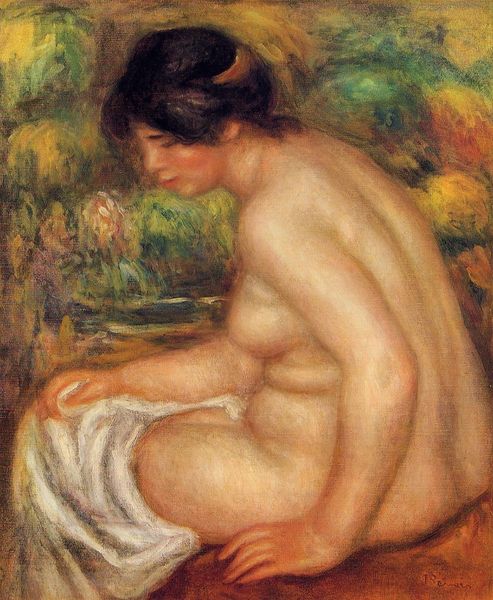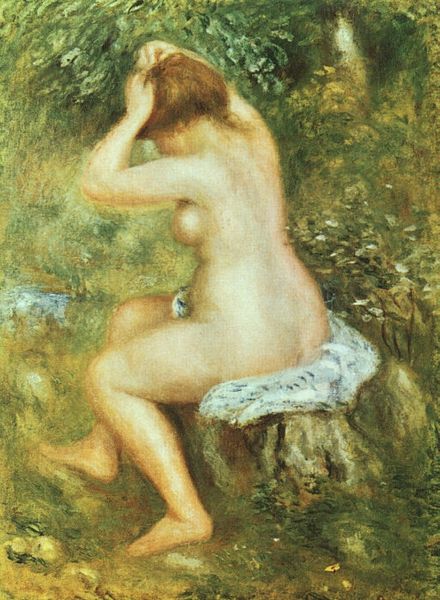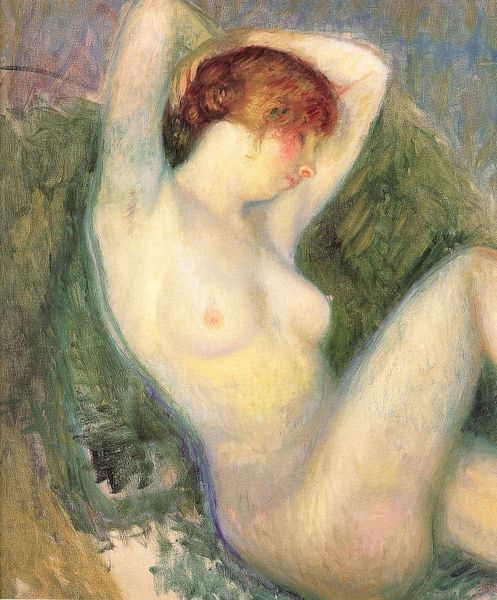
Copyright: Public domain
Curator: Welcome. Let's consider Boris Kustodiev's painting "Bather," created in 1922. This oil painting presents us with an intimate scene set against a backdrop of a provincial Russian town. Editor: Whoa, okay, immediate reaction: it’s like a playful dream. The colors are vivid, and the woman has this joyful confidence...like she owns the place. There is an unapologetic and romantic depiction of feminine beauty that reminds me of Renoir, if Renoir had spent summers in rural Russia. Curator: That feeling is partially rooted in Kustodiev’s complex relationship with Russian folk art and his attempt to redefine national identity. His disease confined him to a wheelchair, intensifying his nostalgic yearning for these scenes of everyday life, romanticizing and, some would argue, idealizing pre-revolutionary Russia. The Bather thus engages in a discourse around Russian cultural memory. Editor: Yeah, there’s definitely a sense of longing here. The nude figure, set against the vibrant town and river, feels symbolic, almost like Mother Russia herself emerging, maybe reborn? I can almost hear the distant music and chatter, you know? Like a memory resurfacing in my own mind... but more colorful! Curator: That's interesting. Kustodiev uses that vibrant colour palette, almost Fauvist in its intensity, as a counterpoint to the hardships of post-revolutionary Russia, as if consciously attempting to visualise joy and escape. What appears initially to be merely a pleasant scene is actually loaded with social and political implications. Editor: See, for me, that knowledge enriches it even more. The painting becomes like an act of defiance through beauty, doesn't it? You're saying it pushes back against the grayness with color! The more I look, the more stories I imagine... Kustodiev managed to capture not just an image, but a feeling. A big, boisterous, colourful feeling. Curator: Precisely. By understanding the context, the social fabric from which this painting emerges, we move beyond surface beauty to see how Kustodiev navigates the political and cultural landscape of his time. Editor: It reminds you to feel...boldly, unapologetically! To just jump into the river and be done with all your clothing…figuratively, of course. Curator: Absolutely. Now perhaps visitors might engage the work and see it with newly opened eyes. Editor: Totally different eyes. Art history, at its best, enhances and intensifies one’s perception. Thanks for taking a dive with me into this one!
Comments
No comments
Be the first to comment and join the conversation on the ultimate creative platform.
